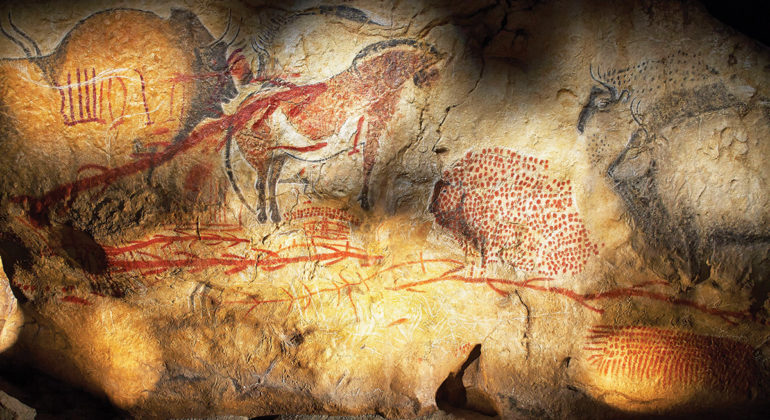A pink, crosshatched design adorning a rock from a South African cave might also catch the prize because the oldest general drawing.
historical humans sketched the line sample around 73.”000 years ago by way of running a bit of pigment throughout a smoothed part of stone in Blombos Cave, scientists say. previously, the earliest drawings dated to roughly 40.”000 years ago on cave walls in Europe and Indonesia.
the discovery “helps circular out the argument that Homo sapiens at Blombos Cave behaved essentially like us before 70,000 years in the past,” says archaeologist Christopher Henshilwood of the school of Bergen in Norway.
His crew observed the ancient drawing whereas inspecting lots of stone fragments and equipment excavated in 2011 from cave sediment. other finds have blanketed one hundred.”000- to 70,000-12 months-ancient pigment chunks engraved with crosshatched and line designs SN online: 61209, 100.”000-year-historic abalone shells containing remnants of a pigment-infused paint SN: 1119eleven, p. 16 and shell beads from across the same time.
The dwindled pattern consists of six upward-oriented strains crossed at an angle by three a bit of curved strains, the researchers file online September 12 in Nature. Microscopic and chemical analyses showed that the lines were detached of a reddish, earthy pigment referred to as ocher.
The strains end all of sudden at the rock’s edges, indicating that a larger and perhaps extra complex version of the drawing originally seemed on an even bigger stone, the researchers say. Tiny pigment particles dotted the rock’s drawing floor, which had been floor smooth. Henshilwood suspects the chunk of rock became part of a huge grinding stone on which people scraped items of pigment into crayonlike shapes.
Crosshatched designs corresponding to the drawing had been discovered engraved on shells at the web page, Henshilwood says. So the patterns may have held some form of which means for their makers. nevertheless it’s hard to understand no matter if the crossed lines signify an abstract thought or a real-existence subject. Some modern hunter-gatherer societies create abstract-looking designs that really depict animals, objects or people, he says.
anything the drawing’s normal value, it shows that Stone Age folk in southern Africa communicated something they regarded crucial through making use of crosshatched patterns to diverse surfaces, says archaeologist Paul Pettitt of Durham tuition in England. “If there is any factor at which you’ll be able to say that symbolic recreation had emerged in human society, this is it.”
however archaeologist Maxime Aubert of Griffith tuition in Southport, Australia, isn’t so certain. Henshilwood’s team can’t exclude the probability, as an example, that the apparent drawing accidentally resulted from individuals sharpening the tips of pigment chunks on rocks to make Stone Age crayons, Aubert says.
Henshilwood disagrees. Experimental reproductions of the crosshatched pigment pattern, drawn on rocks like these on the South African cave, indicate that the lines had been deliberately produced and were at the start darker and more advantageous described, he says. previous proof also recommended that ancient people on the cave used pigment as a glue ingredient and probably as a sunscreen. but the experimental drawings produced too little powder to use as a glue additive or a sunblock. historic pigment wielders seem to have desired handiest to draw a design on the stone.
Henshilwood’s crew has validated a way to determine deliberate drawings at historic human sites by means of aside from different feasible explanations for making pigment strokes, says archaeologist Gerrit van den Bergh of the school of Wollongong in Australia. “It is likely that further facts for early symbolic behavior may be found in the very near future.”

